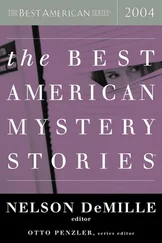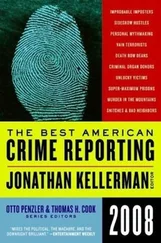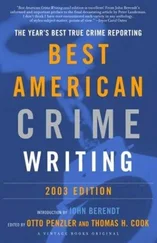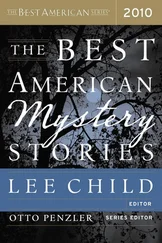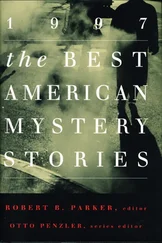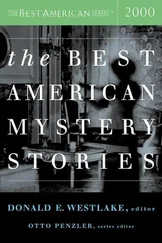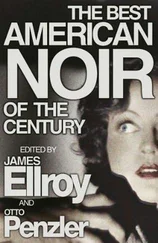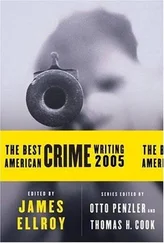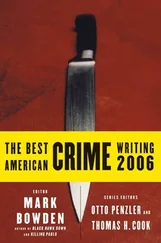In 1998, Target began an investigation of an organized retail-crime ring in Atlanta that was stealing computers, DVDs, stereos, televisions, and clothing, along with over-the-counter medicines and razors. Target’s agents learned that the group comprised thirty Pakistani immigrants, most of them illegal, who operated a string of convenience stores. They shipped the stolen goods via UPS to large cleaning and repackaging operations in New York, Maryland, and Pakistan. “We got the Atlanta police department and county sheriff’s office involved,” Rogers says, “and were finally able to lure the F.B.I. into the situation, because at least one of the insiders in this group was a police officer. Then it became a public corruption case.” In October, 1998, the F.B.I. launched Operation American Dream, which resulted in the bust of one of the country’s biggest organized retail-crime rings. The gang used more than two hundred professional shoplifters, who stole up to a hundred thousand dollars’ worth of merchandise a day from various chain stores-Target, Wal-Mart, Kmart. The bust resulted in eighty-seven arrests, the seizure of four hundred and fifty thousand dollars in cash, and the recovery of more than a million and a half dollars in stolen merchandise. Investigators learned that the gang was also involved in money laundering, illegal-alien smuggling, and car theft.
ROGERS RETIRED FROM TARGET IN 2001 and was succeeded as the head of asset protection by Brad Brekke. A tall, lean man of fifty-two, Brekke worked both as an F.B.I. agent and as a lawyer before being recruited by Rogers, in the late nineties, as an investigator. When he became the head of asset protection, Brekke had the revolutionary idea of creating a crime laboratory inside office headquarters to combat retail-theft gangs. “We’re realists here,” Brekke told me recently, when I met with him at Target’s main offices, in downtown Minneapolis. “Property crimes generally are not a high priority for law enforcement, nor should they be. So we took the approach that if we could do the front-end work-do the video analysis, the fingerprint and computer analysis-then give it to the law-enforcement agencies, they don’t have to spend the time and effort on it.”
Target’s crime labs are situated on the first floor of a sprawling office complex in an industrial park twenty minutes north of downtown Minneapolis. I was given a tour of the labs by Rick Lautenbach, Target’s manager of forensic services. We entered through a series of password-protected doors-Lautenbach punched his personal code into a keypad. “We can’t just go into a closet at the back of a Target store and open a crime lab,” he explained. “We have to have a facility that measures up to the government’s standards for admissibility of evidence.”
I was taken to a large, windowless room at the end of the main hallway, where Target operates its latent-fingerprint lab-a facility for detecting and recording fingerprints that are not visible to the naked eye. The room contained a fuming chamber, which resembles a glass-fronted refrigerator. To check for prints, agents place any type of nonporous object-plastic CD cases, metal iPods-in the chamber. A drop of Superglue is put into the chamber in a small tin dish and heated; the heat releases fumes of the glue’s active ingredient, cyanoacrylate, which adheres to the moisture secreted by fingertips, creating a visible white print. The prints are then dye-stained with a fluorescent pigment and taken to a small adjoining room with black walls, ceiling, and floors, for photographing and scanning under lights of different wavelengths. “We don’t have connectivity to any database with people’s criminal history, because we’re private,” Lautenbach says, “but we can match events together to catch a criminal or criminal gang and we pass that along to law enforcement.” Lautenbach told me about a recent case of a man suspected of repeated thefts at Target stores in Arizona. He was captured on a security camera as he picked up several items and put them in a shopping cart. Apparently aware that he was under surveillance, the man abandoned his cart and left the store. Loss-prevention agents retrieved a tissue holder that the man had handled and sent it to the fingerprint lab for analysis. Meanwhile, the investigations team was looking into whether the man was selling stolen items on eBay; recent online sale postings matched his known thefts. The agents made a “controlled purchase” from the eBay seller-a box set of “The Sopranos” on DVD. Lab analysis revealed that the fingerprints on both the tissue holder and the “Sopranos” DVDs were the same. “We turned the fingerprints over to the Maricopa County attorney’s office,” said Lautenbach. The man was convicted of felony trafficking in stolen property and computer tampering.
Next to the fingerprint lab is the video-analysis laboratory, a small room stocked with desktop computers and video equipment. Two agents sat at a computer and compared security-camera recordings of after-hours “smash and grab” A.T.M. thefts at several Target stores in three states in the South. One video showed thieves backing a Jeep Cherokee through the locked glass entrance doors of a Target, shattering them, then hitching a chain to the A.T.M. and ripping the machine off its moorings as they gunned away. Another tape showed the same crime, involving an S.U.V., at a different location. Though the thieves were masked, and the vehicles were different (the license-plate numbers revealed that both were stolen), the thieves’ practiced movements and the precision of their actions suggested to the agents that they were the same crew. Lautenbach explained that, in order to get law enforcement to take on a theft case, Target needs to establish the seriousness of the crimes. “To do that,” he says, “we need to establish the scope of the criminal activity across a geographic area, or at least show that a common suspect is involved.”
Next, I was shown the computer forensics lab. Here Brent Pack, a burly, bearded man who is Target’s senior computer investigator, analyzes digital storage devices seized from suspected retail-crime gangs-BlackBerrys, photo memory cards, cell phones, business servers, and desktop computers. Pack joined Target three years ago, after a stint in the United States Army, where, as part of the Computer Crime Investigative Unit, he analyzed the photographs taken by soldiers at Abu Ghraib prison. (“I had to extract the metadata from inside the pictures and create the time line, because there were multiple cameras taking different photographs and each of them was set to different times,” Pack said. “Took about two months to complete and another month to finalize. Then I had to go to court for two years to testify about it.”) At the moment, Pack was analyzing a hard drive seized by the police in a phony-check-writing operation that had victimized Target stores. “I’m going through here and looking for any evidence of check-writing software on any of their hard drives,” he said, pointing to his computer screen, which showed a JPEG of a bank check. “Drives are so big now-some are five hundred gigabytes-you can’t just randomly search,” he said. “You’ve got to be tactical.”
Brekke launched Target’s crime laboratories, five years ago, with the intention of fighting the “brick and mortar” storefront fences and warehouse repackaging operations that King Rogers had helped to uncover. But since then, Brekke says, the labs have increasingly been used to fight “e-fencing,” the resale of stolen goods online through eBay, Craigslist, and other e-commerce sites, where thieves can operate with virtual anonymity. (Sellers on eBay and other sites are not required to post any personal information; eBay says that “such requirements do nothing to effectively prevent the sale of stolen goods and would expose honest online sellers to significant risk for identity theft.”)
Читать дальше

